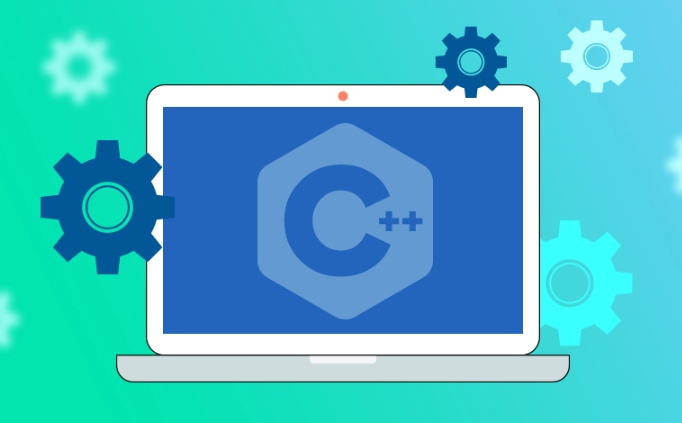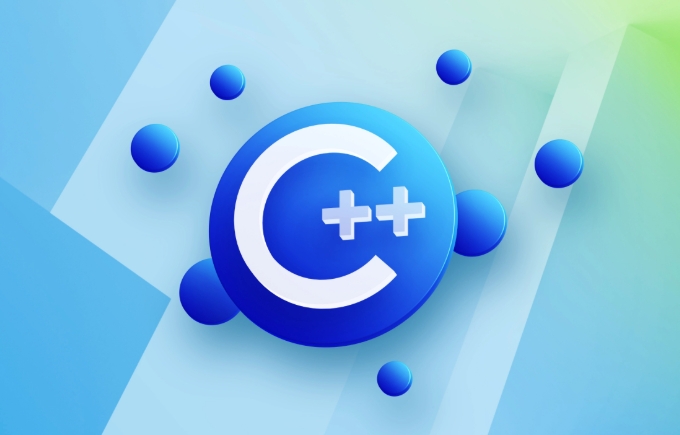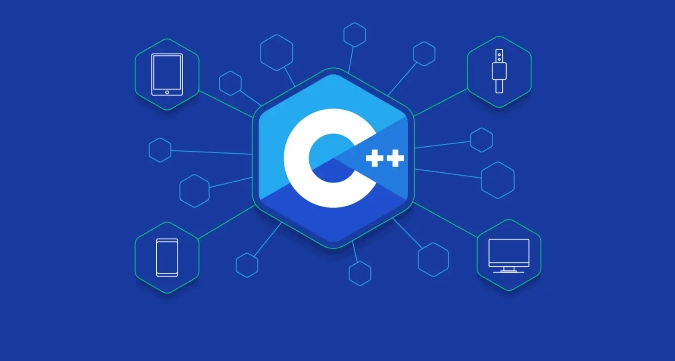Move semantics is a feature introduced by C 11 to optimize resource management and reduce unnecessary copy operations. Its core idea is to directly transfer the object's resources rather than copying when it is about to be destroyed, and it is implemented through moving constructors and moving assignment operators. For example, std::move converts lvalues ??to rvalue references to trigger a move operation instead of actually performing a move. Unlike copy, moving usually puts the original object in an empty or invalid but legal state, such as a null pointer or an empty vector. Common applicable scenarios include processing large objects, returning local objects to containers, adding elements and resource management classes, but excessive use should be avoided in small objects or high-frequency call paths. Correctly writing moving constructors and assignment operators and understanding resource transfer timing are the key to mastering this feature.

Move Semantics of C is an important feature introduced by C 11. Its core lies in optimizing resource management and reducing unnecessary copy operations. Simply put, when an object is about to be destroyed or no longer needed, we can "mov" its resources instead of copying it, thereby improving performance.

What is moving semantics?
In traditional C, when we assign or pass arguments, the copy constructor or copy assignment operator is often triggered, which means that the resource will be copied in full. For example, when a std::vector is copied, the internal heap memory will be re-allocated and the data will be copied.

The core idea of ??mobile semantics is: if an object is soon destroyed (such as a temporary variable), then we can "steal" its resources directly instead of trying to copy a copy. This "stealing" process is achieved through moving constructors and moving assignment operators .
For example:

std::vector<int> v1 = {1, 2, 3};
std::vector<int> v2 = std::move(v1); // The content of v1 is "moved" to v2, and v1 is now in a valid but undefined state std::move here is not really performing a move operation, it just converts v1 into an rvalue reference type, telling the compiler: "I can be moved".
Mobile vs Copy: What's the difference?
- Copy : Create a new object and copy everything from the original object. Applicable to immutable objects or the original objects still need to be retained.
- Move : "transferring" resources from one object to another will usually make the original object empty or invalid, but it is still legal (such as null pointers or null vectors).
For example, suppose you have a dynamically allocated array class:
class MyArray {
int* data;
size_t size;
public:
// Copy constructor MyArray(const MyArray& other) {
data = new int[other.size];
std::copy(other.data, other.data other.size, data);
size = other.size;
}
// Move constructor MyArray(MyArray&& other) noexcept {
data = other.data;
size = other.size;
other.data = nullptr; // The original object no longer has the resource other.size = 0;
}
};It can be seen that copying requires applying for new memory and copying data, while mobile directly "take over" existing resources, which is much more efficient.
Rvalue reference with std::move
To understand the movement semantics, you must understand the rvalue reference . The rvalue reference is represented by T&& and can be bound to a temporary object (i.e., an rvalue).
- Lvalue: an object with a name that can take addresses, such as variables.
- Rvalue: A temporary object, cannot take address, such as literals and expression results.
The purpose of std::move is to cast an lvalue to an rvalue reference, allowing the call to a move constructor or a move assignment operator.
What should be noted is:
- After using
std::move, the state of the original object is usually valid but uncertain. - It is not recommended to use
std::movefor constant references, as that can lead to unexpected behavior.
When should mobile semantics be used?
- Moving semantics can significantly improve performance when dealing with large objects (such as containers, strings, custom resource classes).
- Modern compilers usually optimize automatically (NRVO) when returning local objects, but explicit movement can also help with optimization in some cases.
- When writing generic library code, supporting mobile semantics allows your class to work more efficiently with other standard library components.
Some common scenarios include:
- Function returns local object
- Add elements to the container (such as
push_back(std::move(x))) - Resource management category (file handles, network connections, etc.)
But also note:
- If the object itself is small or has no dynamic resources, the benefits of movement may not be large.
- Don't overuse
std::move, especially in code paths that are looped or high-frequency calls.
Basically that's it. The key to mastering mobile semantics is to understand when and where resource transfer is suitable, and how to properly write and use mobile constructors and mobile assignment operators.
The above is the detailed content of C move semantics explained. For more information, please follow other related articles on the PHP Chinese website!

Hot AI Tools

Undress AI Tool
Undress images for free

Undresser.AI Undress
AI-powered app for creating realistic nude photos

AI Clothes Remover
Online AI tool for removing clothes from photos.

Clothoff.io
AI clothes remover

Video Face Swap
Swap faces in any video effortlessly with our completely free AI face swap tool!

Hot Article

Hot Tools

Notepad++7.3.1
Easy-to-use and free code editor

SublimeText3 Chinese version
Chinese version, very easy to use

Zend Studio 13.0.1
Powerful PHP integrated development environment

Dreamweaver CS6
Visual web development tools

SublimeText3 Mac version
God-level code editing software (SublimeText3)
 Using std::chrono in C
Jul 15, 2025 am 01:30 AM
Using std::chrono in C
Jul 15, 2025 am 01:30 AM
std::chrono is used in C to process time, including obtaining the current time, measuring execution time, operation time point and duration, and formatting analysis time. 1. Use std::chrono::system_clock::now() to obtain the current time, which can be converted into a readable string, but the system clock may not be monotonous; 2. Use std::chrono::steady_clock to measure the execution time to ensure monotony, and convert it into milliseconds, seconds and other units through duration_cast; 3. Time point (time_point) and duration (duration) can be interoperable, but attention should be paid to unit compatibility and clock epoch (epoch)
 How to get a stack trace in C ?
Jul 07, 2025 am 01:41 AM
How to get a stack trace in C ?
Jul 07, 2025 am 01:41 AM
There are mainly the following methods to obtain stack traces in C: 1. Use backtrace and backtrace_symbols functions on Linux platform. By including obtaining the call stack and printing symbol information, the -rdynamic parameter needs to be added when compiling; 2. Use CaptureStackBackTrace function on Windows platform, and you need to link DbgHelp.lib and rely on PDB file to parse the function name; 3. Use third-party libraries such as GoogleBreakpad or Boost.Stacktrace to cross-platform and simplify stack capture operations; 4. In exception handling, combine the above methods to automatically output stack information in catch blocks
 What is a POD (Plain Old Data) type in C ?
Jul 12, 2025 am 02:15 AM
What is a POD (Plain Old Data) type in C ?
Jul 12, 2025 am 02:15 AM
In C, the POD (PlainOldData) type refers to a type with a simple structure and compatible with C language data processing. It needs to meet two conditions: it has ordinary copy semantics, which can be copied by memcpy; it has a standard layout and the memory structure is predictable. Specific requirements include: all non-static members are public, no user-defined constructors or destructors, no virtual functions or base classes, and all non-static members themselves are PODs. For example structPoint{intx;inty;} is POD. Its uses include binary I/O, C interoperability, performance optimization, etc. You can check whether the type is POD through std::is_pod, but it is recommended to use std::is_trivia after C 11.
 How to call Python from C ?
Jul 08, 2025 am 12:40 AM
How to call Python from C ?
Jul 08, 2025 am 12:40 AM
To call Python code in C, you must first initialize the interpreter, and then you can achieve interaction by executing strings, files, or calling specific functions. 1. Initialize the interpreter with Py_Initialize() and close it with Py_Finalize(); 2. Execute string code or PyRun_SimpleFile with PyRun_SimpleFile; 3. Import modules through PyImport_ImportModule, get the function through PyObject_GetAttrString, construct parameters of Py_BuildValue, call the function and process return
 How to pass a function as a parameter in C ?
Jul 12, 2025 am 01:34 AM
How to pass a function as a parameter in C ?
Jul 12, 2025 am 01:34 AM
In C, there are three main ways to pass functions as parameters: using function pointers, std::function and Lambda expressions, and template generics. 1. Function pointers are the most basic method, suitable for simple scenarios or C interface compatible, but poor readability; 2. Std::function combined with Lambda expressions is a recommended method in modern C, supporting a variety of callable objects and being type-safe; 3. Template generic methods are the most flexible, suitable for library code or general logic, but may increase the compilation time and code volume. Lambdas that capture the context must be passed through std::function or template and cannot be converted directly into function pointers.
 What is a null pointer in C ?
Jul 09, 2025 am 02:38 AM
What is a null pointer in C ?
Jul 09, 2025 am 02:38 AM
AnullpointerinC isaspecialvalueindicatingthatapointerdoesnotpointtoanyvalidmemorylocation,anditisusedtosafelymanageandcheckpointersbeforedereferencing.1.BeforeC 11,0orNULLwasused,butnownullptrispreferredforclarityandtypesafety.2.Usingnullpointershe
 How does std::move work in C ?
Jul 07, 2025 am 01:27 AM
How does std::move work in C ?
Jul 07, 2025 am 01:27 AM
std::move does not actually move anything, it just converts the object to an rvalue reference, telling the compiler that the object can be used for a move operation. For example, when string assignment, if the class supports moving semantics, the target object can take over the source object resource without copying. Should be used in scenarios where resources need to be transferred and performance-sensitive, such as returning local objects, inserting containers, or exchanging ownership. However, it should not be abused, because it will degenerate into a copy without a moving structure, and the original object status is not specified after the movement. Appropriate use when passing or returning an object can avoid unnecessary copies, but if the function returns a local variable, RVO optimization may already occur, adding std::move may affect the optimization. Prone to errors include misuse on objects that still need to be used, unnecessary movements, and non-movable types
 How to generate a UUID/GUID in C ?
Jul 13, 2025 am 02:35 AM
How to generate a UUID/GUID in C ?
Jul 13, 2025 am 02:35 AM
There are three effective ways to generate UUIDs or GUIDs in C: 1. Use the Boost library, which provides multi-version support and is simple to interface; 2. Manually generate Version4UUIDs suitable for simple needs; 3. Use platform-specific APIs (such as Windows' CoCreateGuid), without third-party dependencies. Boost is suitable for most modern projects, manual implementation is suitable for lightweight scenarios, and platform API is suitable for enterprise environments.






